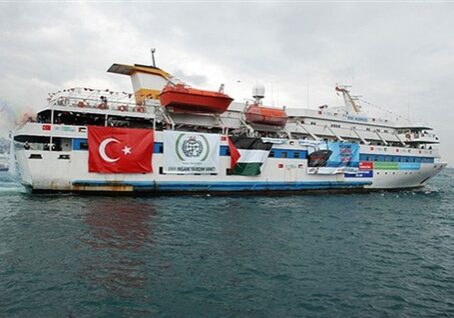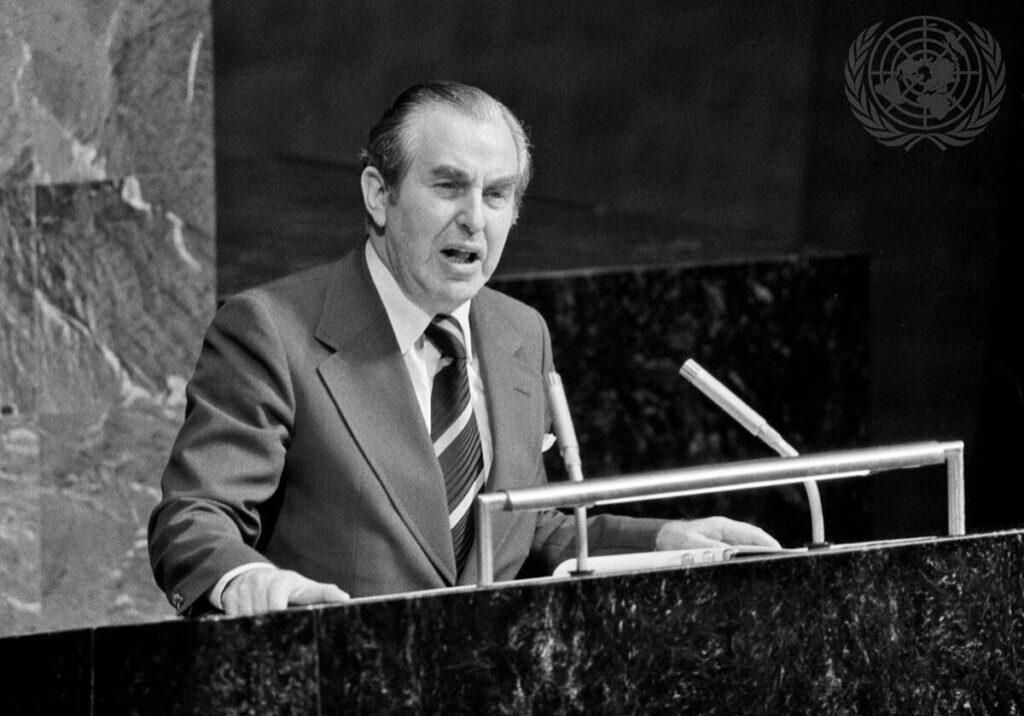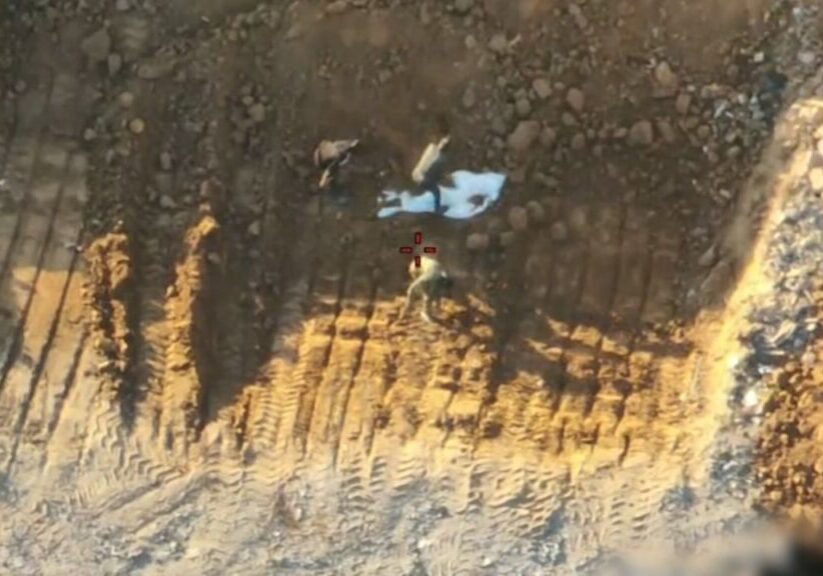Australia/Israel Review
Out of the Fire
Dec 20, 2010 | Amotz Asa-El
After the Carmel conflagration
By Amotz Asa-El
Mount Carmel is not new to fire. The nature reserve where thousands of Israelis have hiked, camped, and barbecued over the years first became famous when a fire that descended on it from heaven distinguished the Prophet Elijah’s offerings, which it accepted, from those of his 400 pagan enemies, which it ignored.
There were no such miracles on the Carmel this December, when flames once again travelled through the pristine ridge overlooking the Mediterranean. Having been kindled not by divine intention, but by a teenager’s neglect to extinguish his waterpipe embers, this conflagration failed to prize the just. After having burned continuously for three days, taking 43 lives and charring 50,000 sq. km. of mostly natural forests, the worst wildfire in Israel’s history has left behind it administrative perplexity and political long knives that are as glaring as the ecological wound that now scars the Carmel.
As has happened in other crises in Israel, some of what could have been avoided with better preparation was compensated for with improvisation.
On the ground, the National Firefighting Service’s 400 firemen and 100 trucks were aided by volunteers who arrived from across the country. Meanwhile 17,000 people, including entire communities, schools, military camps, and one fully populated jail were all flawlessly evacuated from the danger zone, which reached the outskirts of Haifa, Israel’s third-largest city. And up in the air, a hastily assembled multinational fleet of aircraft from no fewer than 17 countries, including the world’s two largest anti-fire airplanes, one American, the other Russian, carpeted the Carmel’s summits, slopes and valleys with a mixture of liquids and powders that finally extinguished the inferno.
The conflagration’s duration and breadth, and the five million trees it reduced to ashes, would likely have sufficed to shock the country and touch off a commotion transcending this disaster’s already grim environmental repercussions. However, the fire also took more lives than any one of the many terror attacks Israel endured last decade.
The lives were lost mostly in one bus that carried cadets from a prison-attendant’s course to the Carmel in order to assist in the evacuation of a local jail. As their bus meandered through the forest, flames suddenly landed on the road and within minutes swallowed the vehicle. Haifa City Police Commander Ahuva Tomer, Israel’s highest ranking female cop, rushed to the scene and managed to direct rescue forces to the bus, before the flames reached her, too. She sustained severe burns and died several days later – one of three police officers consumed by the fire. Two firefighters were also killed.
Tomer, who was promoted after her death to Brigadier General, emerged as the calamity’s heroine, alongside 16-year-old Elad Riben, also killed after he joined the firefighters as a volunteer. Both personified the kind of sacrificial courage with which generations of Israeli military commanders have been educated to lead. Alas, these tales of heroism only exacerbated a general sense of alarm and wrath that has descended on the Jewish state, as the media contrasted Tomer’s resourcefulness with what it portrayed as the rest of the system’s underperformance.
Scientists say the environmental causes of the fire, beyond that water pipe’s ignition, are a combination of global warming, which produced a rainless November that dried the Carmel, and botanical vulnerability, since the forest’s pine trees habitually drip notoriously incendiary sap. While these factors pose some dilemmas concerning the forest’s restoration – and the emerging consensus seems to be to allow it to regenerate naturally – the ecological debate is a tempest in a teapot compared with the fire’s political fallout.
The crisis turned political even before the flames died out.
The first repercussion was actually happy, when it turned out that Turkey had sent several aircraft to help quell the fire. It was the first sign of a potential rapprochement between Jerusalem and Ankara after a steady deterioration in diplomatic relations, particularly following last June’s fatal clash in the Mediterranean between pro-Palestinian Turkish activists and IDF troops. Turkey’s contribution prompted Israeli PM Binyamin Netanyahu to call and personally thank Turkish Premier Recep Erdogan, and as a result, Israel and Turkish diplomats are reportedly now trying to negotiate a way to put last spring’s events behind the two former allies.
Yet the fire’s main political implications are naturally domestic.
The most obvious practical conclusion from the fire is that Israel must build its own fleet of firefighting aircraft. Though some Israeli light airplanes did take part in extinguishing the fire, the whole country saw on TV just how ill-equipped Israel is when it comes to a fire on such a scale, and how other countries’ aircraft fought it fairly easily.
This discovery has been particularly frustrating for a country that prides itself on an air force that, if only assigned and equipped to fight wildfires, would likely perform on that front as well as it already does on others. Given the fact that the costs involved in the creation and maintenance of an air force firefighting capability are not beyond Israel’s means, and that the relevant knowhow is nothing Israeli technology, science and entrepreneurship can’t deliver, there is a general consensus that the shortcomings exposed by the wildfire were primarily a failure of political management.
Prime Minister Netanyahu understood within hours of the wildfire’s eruption that he must immediately arrive at the scene and personally assume charge of the situation, lest it become for him what Hurricane Katrina and the Gulf of Mexico oil spill became for US Presidents Bush and Obama, respectively. Netanyahu therefore orchestrated the enlistment of foreign aircraft and personnel, which included even 120 Bulgarian firefighters, and he made sure to be present, and frequently televised, in the emergency operation’s headquarters at Haifa University.
Polls indicate that most Israelis were favourably impressed with Netanyahu’s crisis management. However, the same respondents have also been alarmed by the emergence of the crisis in the first place. The fire exposed Israel’s firefighting services as woefully understaffed, underfinanced, and ill-equipped. This intuitive impression has since also been formally verified in a special State Comptroller’s report which, by coincidence, had been prepared in the months preceding the wildfire, and was then released ahead of its original deadline in the fire’s wake. The question, therefore, is why a succession of Israeli governments did not expand, upgrade, and diversify the National Firefighting Service.
Moreover, unlike other countries that have been plagued by wildfires, from Russia and Greece to Australia and the US, Israel must also consider wildfire in a war context. If one fire on the Carmel took three days to put out, asked a plethora of media commentaries, what should happen in case of a massive missile attack of the sort that Syria, Iran, Hezbollah and Hamas are reportedly equipped to launch on the Jewish state any day?
Further, occasional arrests of Palestinians and Israeli Arabs for deliberately trying to set fire to forests, including several such attempts in central Israel while the fire raged in the north, make the need for sophisticated surveillance and firefighting capacity even more urgent, as some senior Israeli police officers noted.
Many fingers pointed at the Ministry of Interior, which is in charge of the National Firefighting Service, and then at the Minister of the Interior, Eli Yishai, and the ultra-Orthodox party he heads – Shas. For his part, Yishai produced documents attesting he had actually warned of the service’s under-equipment and also demanded that its budget be increased, but the Treasury refused to approve the needed funds. His detractors, led by the newspaper Haaretz, which called in an editorial for his resignation, say Yishai never turned his demands into ultimatums, the way he did over the years repeatedly and effectively about the myriad religious causes that have been the building blocks of his political career.
Meanwhile, the Treasury said it actually had expanded the firefighting budget, but the new allocations remained unused. And in the same vein, the Treasury and the Interior Ministry dispute the damage assessments related to the fire, which the former assesses at up to NIS 120 million (A$34 million), a good NIS 60 million less than the Interior Ministry’s calculation.
To absolve himself, Yishai is demanding that the bureaucratic response to the fire be probed by a judicial commission of inquiry, which he believes will lay equal blame on the eight ministers from both sides of parliament who have run the Interior Ministry successively over the past decade. However, a judicial commission is anathema to Netanyahu, as it might, so to speak, draw fire to him.
As 2010 drew to a close, it seemed that 2011 will see the creation of an Israeli firefighting air fleet. Though at least one company says it can do the job privately, the fleet will likely be run by the air force, and be answerable either to the Defence Ministry or to the Internal Security Ministry, which oversees Israel Police. Either way, the Interior Ministry is expected to lose its responsibility for the National Firefighting Service, and then watch on as others take that antiquated agency to new pastures. And when that happens, Minister Eli Yishai, like his biblical namesake’s ancient rivals on the Carmel, will be left to consider fire’s mysterious origins – and unpredictable results.
Tags: Israel






